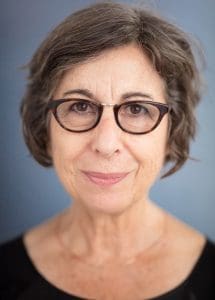Peacebuilding through an Artist’s Perspective. Member Spotlight: Dorit Cypis

Dorit Cypis is a veteran artist and peacebuilder
Dorit Cypis, an artist and conflict engagement consultant, is a founding member of MBBI as well as the founding chair of MBBI’s Middle East Initiative. With several awards, fellowships, and start-ups in her name, she has been expressing socio-cultural relationships and personal identity in an aesthetic way since her 20s.
Conflict that’s between us is also within us and to transform impasse between us we have to first transform impasse within us.
Belonging to a family with traumatic experiences of World War II, she recognized the weave between personal life events and cultural conflict throughout history. As an artist exploring aesthetics, she expanded into the field of Conflict Studies to further explore social conflict. With no experience or background in law, she explained that going back to school in her 50s was arduous. Yet she persisted advising others to “keep moving, ask questions, get involved with people who are not like you. People are afraid to do that but it’s worth it in the end.”
Dorit has thus triumphantly emerged as the one, supplanting the traditional and procedural law teaching, with the influence of her ornate experience in arts. She has integrated a lot of what she teaches to artists in her conflict resolution methodologies. Her exceptional ways of educating about negotiations and facilitated dialogues include, “how to analyze and access using not just cognition but also intuition through both sensorial and perceptual means, how to understand the filters and patterns of our own identity, the subtlety of listening and engaging across impasse.”
Her new platform Peoples Lab builds creative leaders for social change, using somatic, perceptual, psychological and procedural skills training. One of the most noted skill-training, “Diversity+Difference,” she explained:
While diversity is divided into big categories like race, class, gender, and ethnicity, the differences between us are subtler than these cultural categories of diversity. Unique threads of our dream, myth, family, history, and desire add breadth to considering our differences. The bifurcated slots of diversity are filled with inter-folded complexity.
Her style as a mediator is transformative in nature not evaluative. For Dorit, the most significant feature in a mediation is not who gets what, but how relations are transformed.
When Pain Becomes Empathy Facilitator
While sharing her most diplomatic predicament in peacebuilding, she reflected on her mediation visit to an Israeli village, Neve Shalom-Wahat al-Salam, in 2009, following the Gaza War (2008-09). Having been born in Israel, she recounted once visiting this village in her childhood. She decided to revisit this village as a mediator because of its unparalleled initiative to accommodate both Jewish and Palestinians together. Being able to identify with the suffering of the disputed parties, she decided to abandon her prepared training material and rely on her own experiences to build empathy utilizing sensorial walks involving trust-building and in-depth reflections.
Dorit also shared the biggest quandary in her personal life. Having tensions between her and her mother due to the cultural gap between them, she explained: “it took my entire adulthood to understand who she was, to stop blaming her and to stop reacting.” She expressed, “late in her life, I took the opportunity to move closer to where she lived as I realized it was my last chance to make peace with her. It took 10 years.”
Peace Is A Process
Despite all the struggles, Dorit continues to hope that women continue to develop self-confidence and expand their capacities. “It’s a lifelong project,” she added.
As a woman, you will always be challenged because cultural growth is slower than you are, and human change moves very slowly. Even though situations may push you back, you must find a place of strength within you. You may not succeed to the desired level, but you will be better than yesterday. Don’t expect a straight line of change, it will be a process where you sometimes have to move backward to grow.
It is not the particularity of dispute that makes the experience momentous, but rather the process through which the dispute is transformed.
A dispute is like a twisted ball of a thread full of knots exhaustively tangled up within one-another, unable to respire. Mediation is a process of disentangling this thread very carefully keeping an eye out for peculiarities. When conflict gets untangled, it blossoms into something else, into a third new thing. Unsnarling is like making art.
Article by Divya Sugand, MBBI Writer

